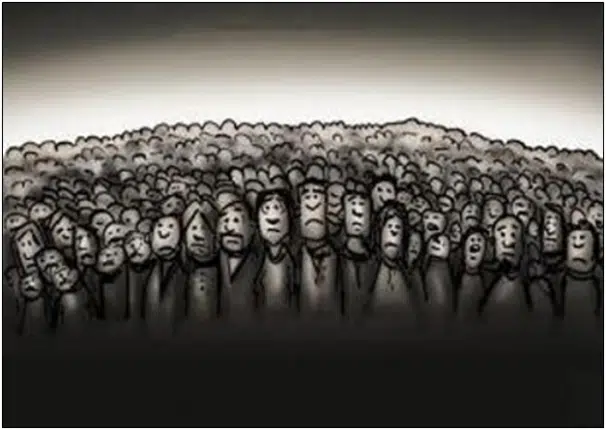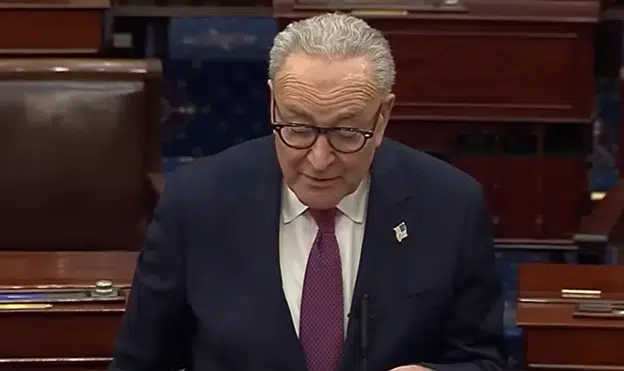
Changes to federal law in the $1.7 trillion omnibus spending bill will end the Medicaid “continuous enrollment” provision passed by veto-proof margins in 2020 in the Families First Coronavirus Response Act that prohibited states from disenrolling Medicaid patients even when they no longer qualified during the Department of Health and Human Services’ (HHS) public health emergency which began in March 2020.
As a result of the 2020 changes to law and regulations, Medicaid enrollment skyrocketed by 20.2 million to more than 91 million since Feb. 2020, according to the latest data from the Centers for Medicare and Medicaid Services (CMS) compiled by the Kaiser Family Foundation, as 25 million jobs were temporarily lost and unemployment claims soared. The mechanism for the expansion appears to have been automatic enrollment when patients showed up to the hospital and other medical services without insurance during the pandemic.
It was Medicaid expansion larger than that even achieved under Obamacare during the entire period of expanded enrollment from 2010 through all of 2019, when the number went from 56 million before the Affordable Care Act was passed, to 71 million in 2019. It had reached 75 million in 2016, but continued decreases of the unemployment rate during the Trump years drove down the means-tested eligibility of the program before the steep Covid recession.
Now, with the public health emergency ending on May 11 and under Section 5131 of Subtitle D of the $1.7 trillion omnibus, after March 31 of this year, states are finally allowed to resume verifying income of recipients resulting in redeterminations of eligibility as increased federal spending for Medicaid is phased out.
CMS has estimated that as many as 15 million patients could be disenrolled but in its latest guidance worries that “Without updated contact information, notices, renewal packets, and/or requests for additional information may not reach individuals who have moved, leading to inappropriate coverage loss among individuals still eligible for coverage.” And so, Congress created a way to keep millions of patients continually enrolled in Medicaid for as long as possible even if Managed Care Organizations (MCOs) are unable to get in touch with them.
The law requires prohibits “disenroll[ment] from the State plan or waiver any individual who is determined ineligible for medical assistance under the State plan or waiver pursuant to such a redetermination on the basis of returned mail unless the State first undertakes a good faith effort to contact the individual using more than one modality.” That is at least two attempted points of contact, say, by mail and by phone, but states could use more than two if they choose. The law provides no upper limit on how many modalities may be used. This is a condition of continuing to receive the increased federal funding for the Covid Medicaid expansion, which will phase out completely on December 31.
One of the goals of the phased-out disenrollment period is to transition recipients currently on Medicaid to federally subsidized insurance under the Affordable Care Act prior to disenrollment, further cementing the expansion of socialized medicine in the U.S.
But reaching patients is the problem in general. More than two-thirds of Medicaid recipients receive their care from the outsourced Managed Care Organizations (MCOs), but only one-third in a Kaiser Family Foundation survey reported having up to date contact information for above 76 percent patients. Meaning about 45 percent of MCOs cannot reach their patients. That’s because many of them don’t answer the phone or email or have changed their address since they were enrolled in the program. According to the survey’s results, “Nearly all responding plans said that reaching Medicaid beneficiaries is a challenge.”
This could create a perverse incentive for MCOs — which have a financial incentive to have as many enrollees as possible even it overworks the system and delivers poorer patient outcomes — to leave patients enrolled for as long as possible. Essentially, there will be an underground railroad of activists in the system advocating to keep people inside, even if it turns out they were dead, in jail or not even in the state anymore.
This will also likely create a political push at the state level to find other ways to leave the apparitional recipients in the system, not to mention the new potential constituency of more than 20 million new enrollees who won’t like losing their coverage that state officials might be afraid to take on or else why haven’t they already?
Good luck with getting them out of the system. Maybe somebody should have spoke up about this sooner.
Depending on the state and how the disenrollments are carried out — for example, Florida states that it cannot get in touch with as many as 850,000 Medicaid recipients — that could either mean rapid if not quiet disenrollments, or the conjuring of multitudes of excuses for why many of the recipients do not end up being disenrolled.
Another unintended consequence of the provision is that recipients could have a perverse incentive to either conceal income—which could be off the books—or to become or remain unemployed to continue qualifying for the program.
It’s almost as if had Republicans in Congress and Republican state governors been raising the alarm bells about the continued enrollment provision in the first place — I cannot find a single Republican elected representative or state executive who professes to oppose socialized medicine to have even acknowledged let alone complain about this provision between its 2020 enactment and the passage of the $1.7 trillion omnibus at the end of 2022, calling into question whether they were even aware of this massive expansion of socialized medicine, or else why didn’t they say anything? — then the new Congress might have been able to deal with this in 2023 and states might have been better prepared to deal with what almost certainly will be a bureaucratic if not a political trainwreck.
Robert Romano is the Vice President of Public Policy at Americans for Limited Government Foundation.






